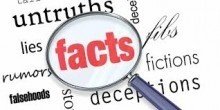Finding out what the wealthiest own is harder than you might expect, but this is a reasonable claim that’s based on a well-regarded set of estimates. It’s important not to confused inequalities of wealth with inequalities of income, which are much lower.
“The richest one percent of the UK population own more than 20 times more wealth than the poorest 20 percent combined.”
Oxfam, 13 September 2016
Measuring wealth inequality is hard, and wealthy people don’t always disclose their wealth when asked. So no estimate is perfect.
Given what we do know, the claim is reasonable.
It’s is based on a study funded by Credit Suisse that’s well regardedby academics.
In fact, that study concluded that the richest 1% own 29 times what the bottom 20% own, so saying “more than 20 times” is a cautious summary.
If you’re concerned about inequality, you have to choose how much you care about different kinds of inequality. Imagine the owner of a large country estate that doesn’t make a lot of money. They are way up the wealth scale, but not necessarily high up the income scale. So wealth inequality is just one part of the picture of inequality generally.
Who’s wealth are we measuring?
Oxfam has made this claim about people. That’s not really what the research estimates. It estimates the wealth of households.
That would make a difference to the claim, but probably wouldn’t make Oxfam’s claim unjustified.
Nobody publishes data on how wealth is distributed between individual people, although the Office for National Statistics told us that they would like to do so at some point in the future.
What’s wealth mean here?
The wealth the claim is estimating includes what you have (property and physical things), what you have in the bank, and what you have in your pension pot.
Looking at all these parts of wealth makes a difference. If you only looked at money in the bank, you’d find that altogether the bottom 20% of households were in financial debt, and so the comparison with the top 1% wouldn’t be so useful.
There is no single right answer
The Office for National Statistics pointed us to a recent report by academics, which emphasised that information on wealth inequality in the UK is ‘seriously incomplete’ and that it’s particularly hard to measure the wealth of the very rich.
They looked at four main ways of estimating wealth, which all have problems:
- Waiting until people die and looking at the value of their estates
- Looking at the tax people pay on their investments
- Asking people, through surveys like the Wealth and Assets survey
- Looking at lists of very rich people, like the Sunday Times Rich List and the Forbes list of billionaires
The main government source of information on wealth in the UK is the Wealth and Assets Survey from the Office for National Statistics. The review found that wealthier people are less likely to answer these kinds of surveys and more likely to under-report their wealth.
So the academics concluded that “given the limitations of each of the different sources, it is important to make use of all available approaches” to understand the wealth of the very rich, and studies like the Credit Suisse one attempt to do that by using the information from the rich lists to fill in the gaps.
Wealth is not everything
The Institute of Economic Affairs, a think tank, pointed out in response to Oxfam’s release that when people talk about inequality, they’re more often referring to income than wealth.
It’s an important difference. By one common measure, adult wealth inequalities in the UK are about twice as high as income inequalities.
Inequality of wealth won’t be a perfect measure of other ways of looking at inequality either, such as inequality of opportunity. For example, a university graduate might have such large financial debts that their overall wealth is very low, as measured by the combined value of their physical possessions, property, bank balance and pension pot.
So, overall wealth inequality between rich and poor isn’t the only type of inequality worth considering.
Update
We updated this article on 22 September, explain in more detail what methods had been used to estimate the figures.
By Will Moy and Richard Braham
This is an extract from the excellent Full Fact published every Friday right here.
You can join the discussion/debate on these issues and many others at https://www.facebook.com/dorset.eye and/or
https://www.facebook.com/groups/280126085520259/
AND on Twitter at @dorset_eye







